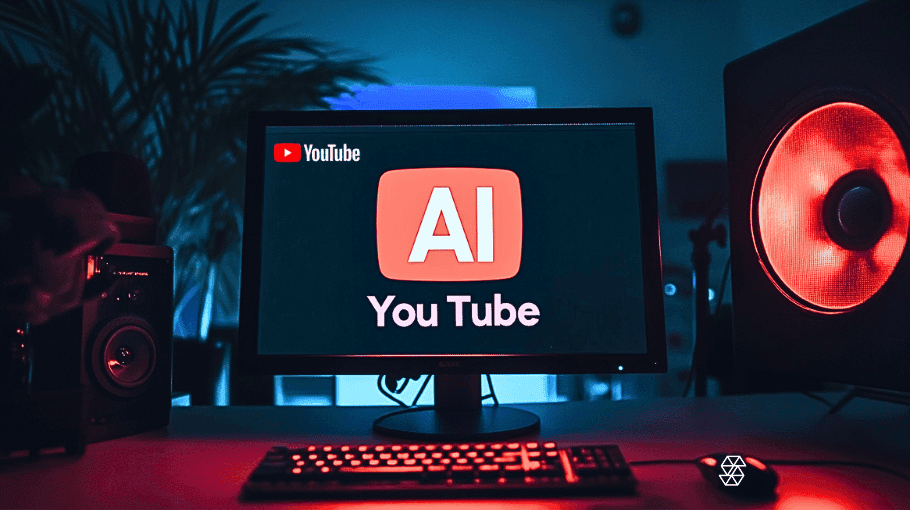10 Enterprise Data Sources to Tailor LLMs to Your Brand’s Voice
In the age of digital transformation, large language models (LLMs) are reshaping how brands interact with their audience. But to truly capture the essence of a brand, these sophisticated AI models need to be finely tuned with specific enterprise data and documents. This tailoring process is pivotal in ensuring that the LLM reflects your brand’s unique voice and tone across various platforms.
At Skim AI, we understand the critical role of LLMs in enhancing your marketing efforts and creative process. Whether it’s to generate content for advertising campaigns, create engaging social media posts, or streamline customer interactions, LLMs trained with the right data can revolutionize your brand’s communication strategies.
In this article, we’ll explore the 10 most crucial types of enterprise data and documents that you should use to train an LLM brand voice. These resources are invaluable in making sure your LLM not only understands the intricacies of your brand but also effectively communicates with your target audience, aligning with your overall marketing strategies.
- 1. Company Website Content
- 2. Social Media Posts
- 3. Customer Feedback and Reviews
- 4. Leadership Communications and Thought Leadership Materials
- 5. Marketing Materials and Campaigns
- 6. Internal Communication
- 7. Sales and Customer Support Scripts
- 8. Product Descriptions and User Manuals
- 9. Video and Audio Content Transcripts
- 10. User Guides and FAQs
- Harnessing Brand Essence in LLM Training
1. Company Website Content
The content on your company’s website serves as the cornerstone of your brand’s digital presence. It’s essential to use this material, especially pages like ‘About Us’ and mission statements, to train your large language model. These pages often encapsulate your brand’s ethos, values, and unique selling propositions, setting the foundational tone and voice that your LLM should emulate. By feeding these texts into the LLM, you ensure it aligns with the core narrative of your brand, maintaining consistency across all digital interactions.
2. Social Media Posts
Social media content plays a crucial role in defining the brand’s more informal and engaging communication style. Analyzing and using social media posts to train your LLM allows it to capture the nuances of how your brand interacts with its audience in a more relaxed and conversational setting. It’s also valuable to consider the audience’s responses and interactions on these platforms. This data can provide insights into what content resonates with your audience, helping to refine the LLM’s approach to social media engagement and content creation.
3. Customer Feedback and Reviews
Customer feedback and reviews are goldmines of information about how your audience perceives your brand and its offerings. Integrating this data into your LLM’s training process is crucial for understanding and replicating the language that resonates with your customers. This insight is invaluable in fine-tuning the LLM’s responses, recommendations, and overall communication style to align with customer expectations and preferences. By leveraging this data, you can ensure your LLM not only speaks in your brand’s voice but also addresses the specific needs and concerns of your audience.

4. Leadership Communications and Thought Leadership Materials
The tone and style of communication from a company’s leadership are integral to defining the overall brand voice. Communications from executives, such as speeches, interviews, blog posts, and op-eds, embody the strategic direction, values, and vision of the brand. Training an LLM with these materials ensures that the AI model can capture and replicate the authoritative and visionary tone that emanates from the top echelons of the company. This is particularly important for content that represents the company’s stance on industry trends, corporate values, or future outlooks.
5. Marketing Materials and Campaigns
Incorporating marketing materials and previous successful campaigns into the training process of your LLM is pivotal for maintaining brand voice consistency. These materials serve as blueprints of how your brand communicates its value proposition and engages with its target audience. By analyzing these campaigns, the LLM can glean insights into successful communication strategies and patterns that resonated with your audience. This understanding enables the LLM to generate content that aligns with proven marketing strategies, ensuring a coherent and effective brand voice across all new marketing efforts.
6. Internal Communication
While external communication establishes your brand’s public voice, internal communication reflects the brand’s identity within the organization. Incorporating internal newsletters, memos, and email templates into your LLM’s training is crucial for ensuring a consistent voice across all facets of communication. This uniformity in tone and style between external and internal communications fosters a cohesive brand identity, which is essential for internal branding and employee engagement. It also ensures that employees are aligned with the brand’s ethos, which can translate into more authentic and effective external communication.

7. Sales and Customer Support Scripts
Sales dialogues and customer support interactions are direct touchpoints with customers and thus are invaluable for training LLMs in effective customer communication. These scripts often contain the language and techniques that have proven successful in engaging customers and addressing their needs. By training your LLM with these scripts, you equip it to handle customer interactions in a manner consistent with your brand’s proven communication methods. This not only enhances customer experience but also ensures that the LLM can effectively replicate the human touch that is often necessary in sales and support scenarios.
8. Product Descriptions and User Manuals
Product descriptions and user manuals are rich sources of information that play a key role in defining your brand’s informative yet accessible tone. These documents often contain detailed explanations of products, services, and their functionalities. By incorporating them into your LLM’s training, you enable the model to explain complex information in a manner that’s consistent with your brand’s communication style. This ensures that the LLM can provide clear, detailed, and brand-aligned responses, particularly in scenarios where customers seek in-depth understanding of your products or services.
9. Video and Audio Content Transcripts
Transcripts of video and audio content offer a conversational and dynamic dimension to the LLM’s training data. These transcripts capture the natural flow of speech, idiomatic expressions, and the nuanced ways in which your brand communicates verbally. Including this type of content in LLM training enriches the model’s ability to generate human-like, engaging, and conversational content. This is particularly valuable in creating marketing content or customer interactions that require a more personal touch, aligning with the brand’s voice and audience expectations.

10. User Guides and FAQs
User guides and Frequently Asked Questions (FAQs) are indispensable for training LLMs in problem-solving communication. These documents typically address common issues, queries, and scenarios that customers encounter. Training your LLM with this data equips it to handle customer inquiries efficiently and accurately, providing responses that are not only informative but also reflective of your brand’s approach to customer support. The incorporation of these guides ensures that the LLM can serve as an effective, first-line support agent, capable of addressing a wide range of customer queries in a manner consistent with your brand’s communication style.
Harnessing Brand Essence in LLM Training
The strategic selection of enterprise data and documents for training LLMs is essential in capturing and maintaining your brand’s unique voice and communication style. By carefully curating content from company websites, social media interactions, customer feedback, and various marketing materials, enterprises can fine-tune LLMs to reflect their brand essence accurately. This tailored approach ensures that the LLMs not only generate content but do so in a manner that resonates with the target audience, upholds brand consistency, and supports marketing strategies effectively.
As we move forward in the era of AI-driven content creation and communication, the importance of aligning LLM outputs with brand identity cannot be overstated. Enterprises that successfully integrate their brand voice into LLMs will find themselves at a significant advantage, with the ability to create engaging, relevant, and personalized content at scale. This is the future of brand communication – one that is dynamically supported by advanced AI, yet deeply rooted in the unique character of each brand.






